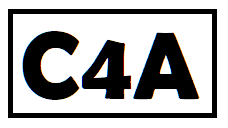Why Use Our Volume Converter?
Converting volume units can be confusing, especially when dealing with different scales like cubic meters, liters, gallons, and more. Our volume converter simplifies this process by providing accurate and instant conversions between these units. Whether you’re a student, professional, or just someone who needs to make quick calculations, our tool is designed to meet your needs.
Key Features of Our Volume Converter
- Wide Range of Units: Convert between Cubic Meters, Liters, Gallons, Cubic Feet, Cubic Inches, and more. Our comprehensive list of units ensures you have everything you need for any conversion task.
- Instant Results: Get immediate conversion results as you type, making it easy to work with precise measurements. No more waiting for calculations; our tool provides real-time feedback.
- User-Friendly Interface: Our intuitive design ensures that anyone can use the converter effortlessly. Simple controls and clear labels make navigation a breeze.
Understanding the Units
Here is a brief explanation of each unit available in our volume converter:
Cubic Meter (m³)
The Cubic Meter is the base unit of volume in the International System of Units (SI). It is defined as the volume of a cube with sides of one meter in length.
Liter (L)
The Liter is a unit of volume commonly used in the metric system. It is defined as one cubic decimeter (0.001 cubic meters).
Gallon (gal)
The Gallon is a unit of volume commonly used in the United States and the United Kingdom. There are different types of gallons, but the most common are the U.S. Gallon and the Imperial Gallon.
Cubic Foot (ft³)
The Cubic Foot is a unit of volume in the imperial and U.S. customary systems. It is defined as the volume of a cube with sides of one foot in length.
Cubic Inch (in³)
The Cubic Inch is a unit of volume in the imperial and U.S. customary systems. It is defined as the volume of a cube with sides of one inch in length.
How to Use the Volume Converter
Using our volume converter is simple. Just follow these steps:
- Enter the value you wish to convert in the “From” field.
- Select the unit of the value you entered from the dropdown menu next to the “From” field.
- Choose the unit you want to convert to from the dropdown menu next to the “To” field.
- The converted value will appear automatically in the “To” field.
Additional Tips
If you need to switch the units, simply click the “Switch” button. This will swap the “From” and “To” units, allowing you to perform the conversion in reverse.
To start over, click the “Clear” button. This will reset all fields, making it easy to begin a new conversion.

Complex Explanations and Examples
Let’s delve deeper into the mathematics behind volume conversions.
Cubic Meters to Liters
The relationship between cubic meters and liters is straightforward. Since 1 liter is defined as 0.001 cubic meters, the conversion factor is:
\[ 1 \text{ m}^3 = 1000 \text{ L} \]For example, to convert 2.5 cubic meters to liters:
\[ 2.5 \text{ m}^3 \times 1000 \frac{\text{L}}{\text{m}^3} = 2500 \text{ L} \]Liters to Gallons (U.S.)
The conversion factor between liters and U.S. gallons is:
\[ 1 \text{ L} = 0.264172 \text{ gal} \]For example, to convert 5 liters to U.S. gallons:
\[ 5 \text{ L} \times 0.264172 \frac{\text{gal}}{\text{L}} \approx 1.32086 \text{ gal} \]Cubic Feet to Cubic Inches
The conversion factor between cubic feet and cubic inches is:
\[ 1 \text{ ft}^3 = 1728 \text{ in}^3 \]For example, to convert 3 cubic feet to cubic inches:
\[ 3 \text{ ft}^3 \times 1728 \frac{\text{in}^3}{\text{ft}^3} = 5184 \text{ in}^3 \]The Importance of Accurate Volume Conversions
Accurate volume conversions are crucial in many fields, including engineering, science, cooking, and everyday life. Using the wrong unit or making a calculation error can lead to significant mistakes and inefficiencies. In engineering projects, for example, a small error in volume measurement can result in incorrect material quantities. In cooking, incorrect volume measurements can affect the taste and consistency of recipes.
Our volume converter helps ensure precision by providing reliable and up-to-date conversion formulas. Whether you’re working on a small project or a large-scale endeavor, our tool can help you achieve accuracy. Trust our converter to handle all your volume conversion needs with ease.
Benefits of Using Our Volume Converter
There are numerous benefits to using our volume converter:
- Time-Saving: Save valuable time by avoiding manual calculations and potential errors.
- Accuracy: Ensure precision with reliable conversion formulas.
- Accessibility: Use the converter from anywhere with an internet connection.
- Versatility: Handle a wide range of units, making it suitable for various applications.
Real-World Applications
Our volume converter has practical applications in many real-world scenarios:
- Engineering: Precise volume measurements are essential in designing and operating systems and processes.
- Science: Scientists rely on accurate volume measurements for experiments and research.
- Cooking: Correct volume measurements are crucial for following recipes accurately.
- Everyday Life: Accurate volume measurements are important for tasks like filling containers, measuring liquids, and more.
Conclusion
Converting volume units doesn’t have to be difficult. With our volume converter, you can easily switch between Cubic Meters, Liters, Gallons, Cubic Feet, Cubic Inches, and other units and obtain accurate results every time. Try it out today and experience the convenience of precise measurements. Whether you’re a professional or just someone who needs to make quick calculations, our tool is here to help.
Follow us on Facebook for more updates!
Contact us at office@calculator4all.com
